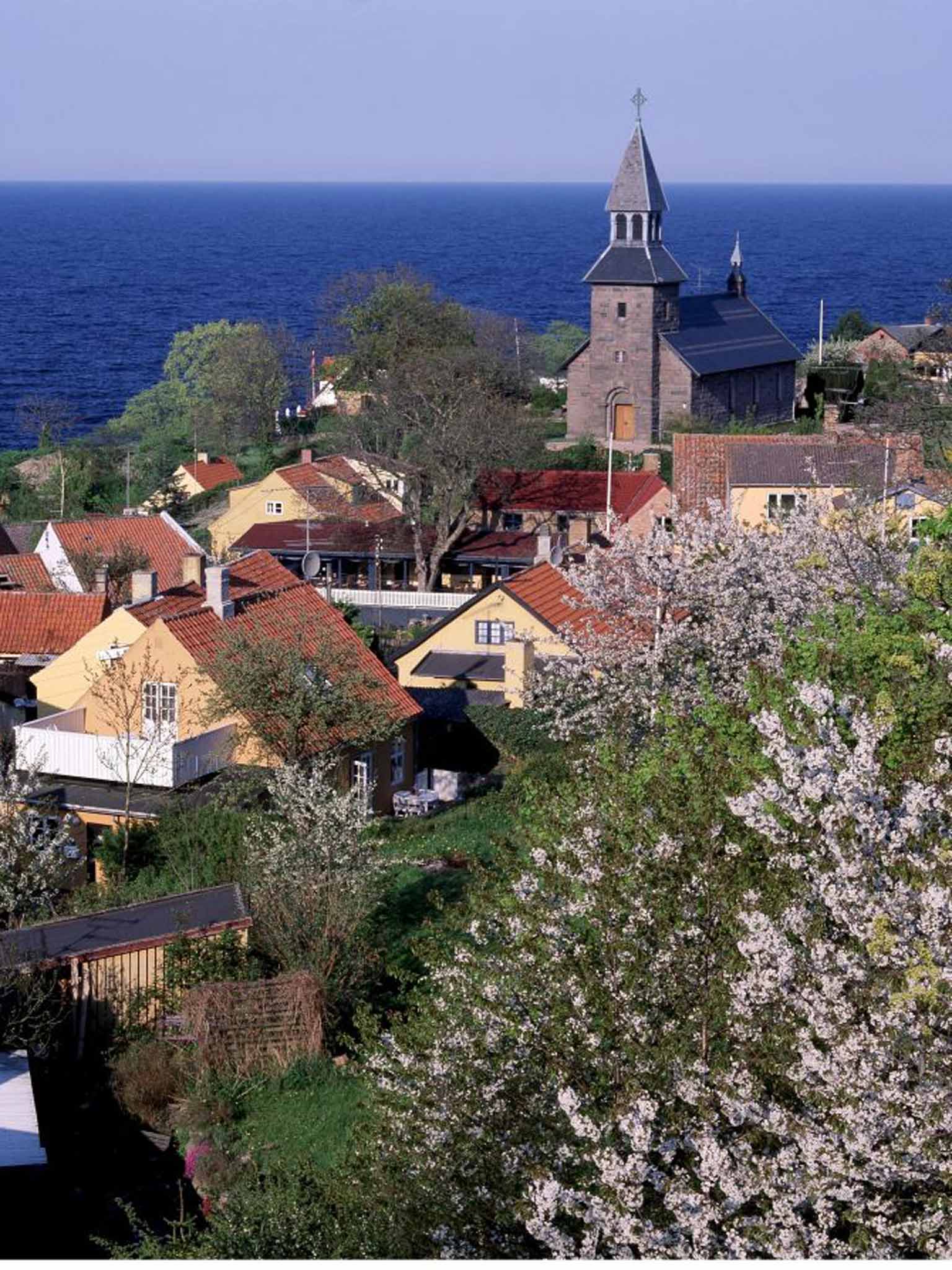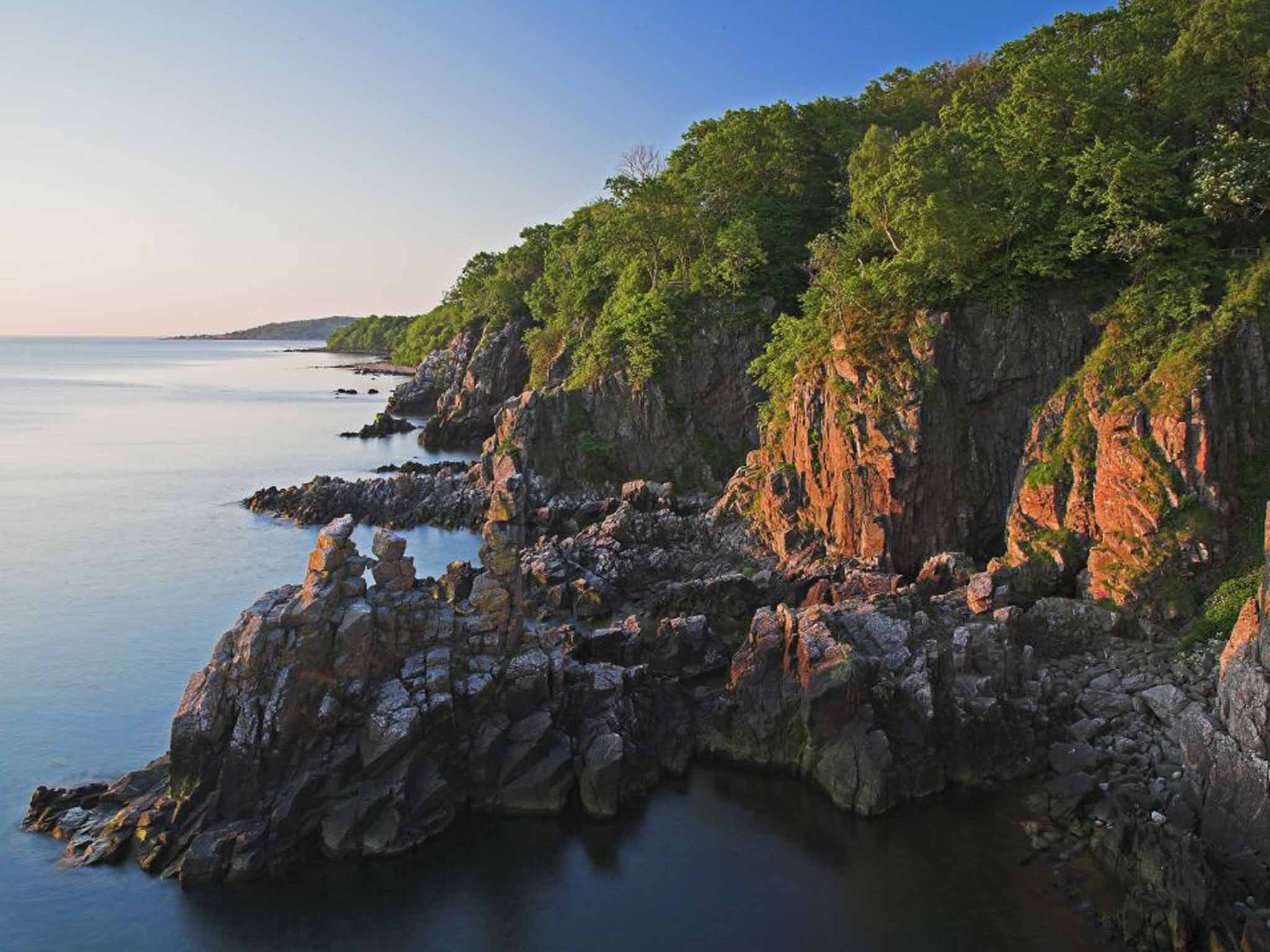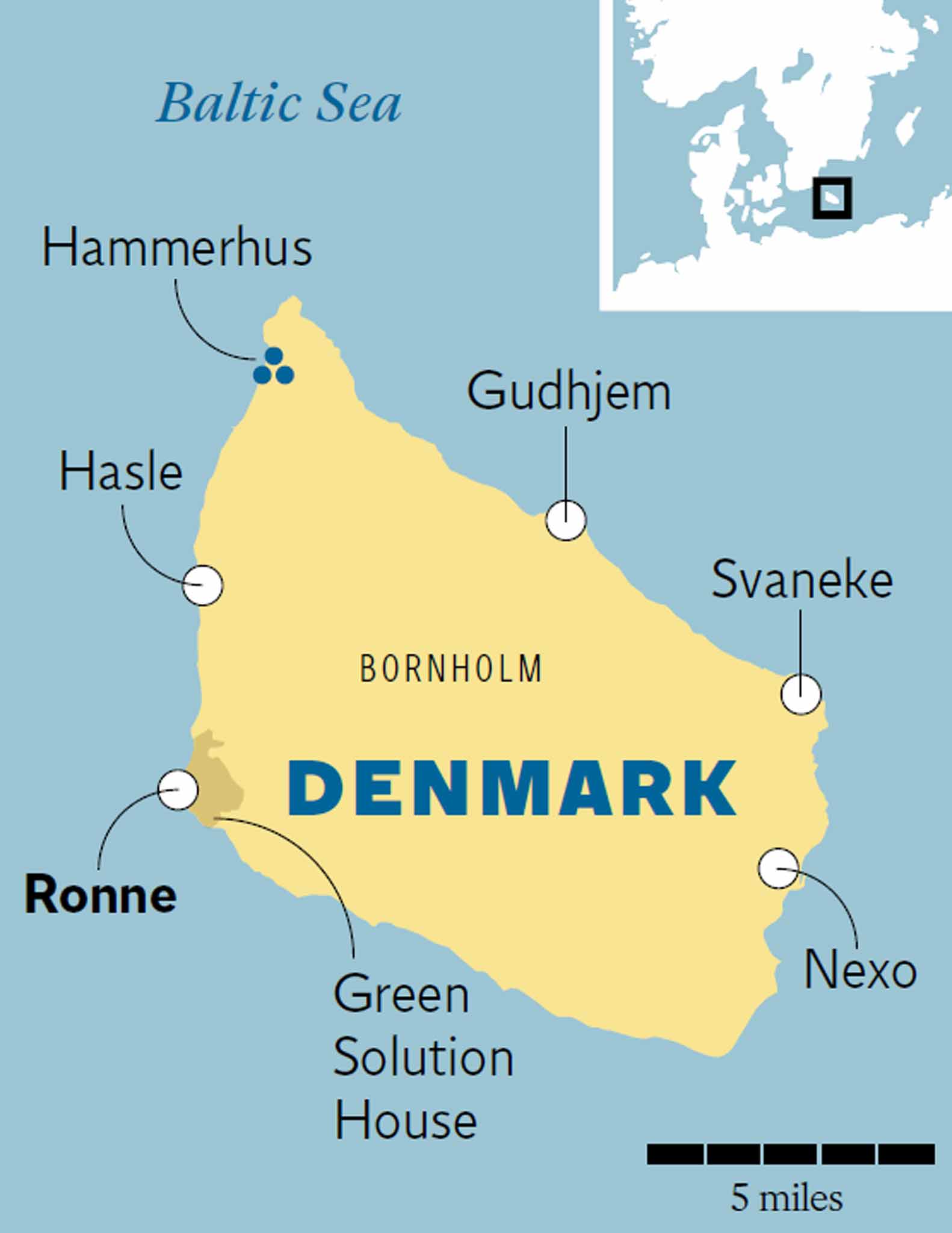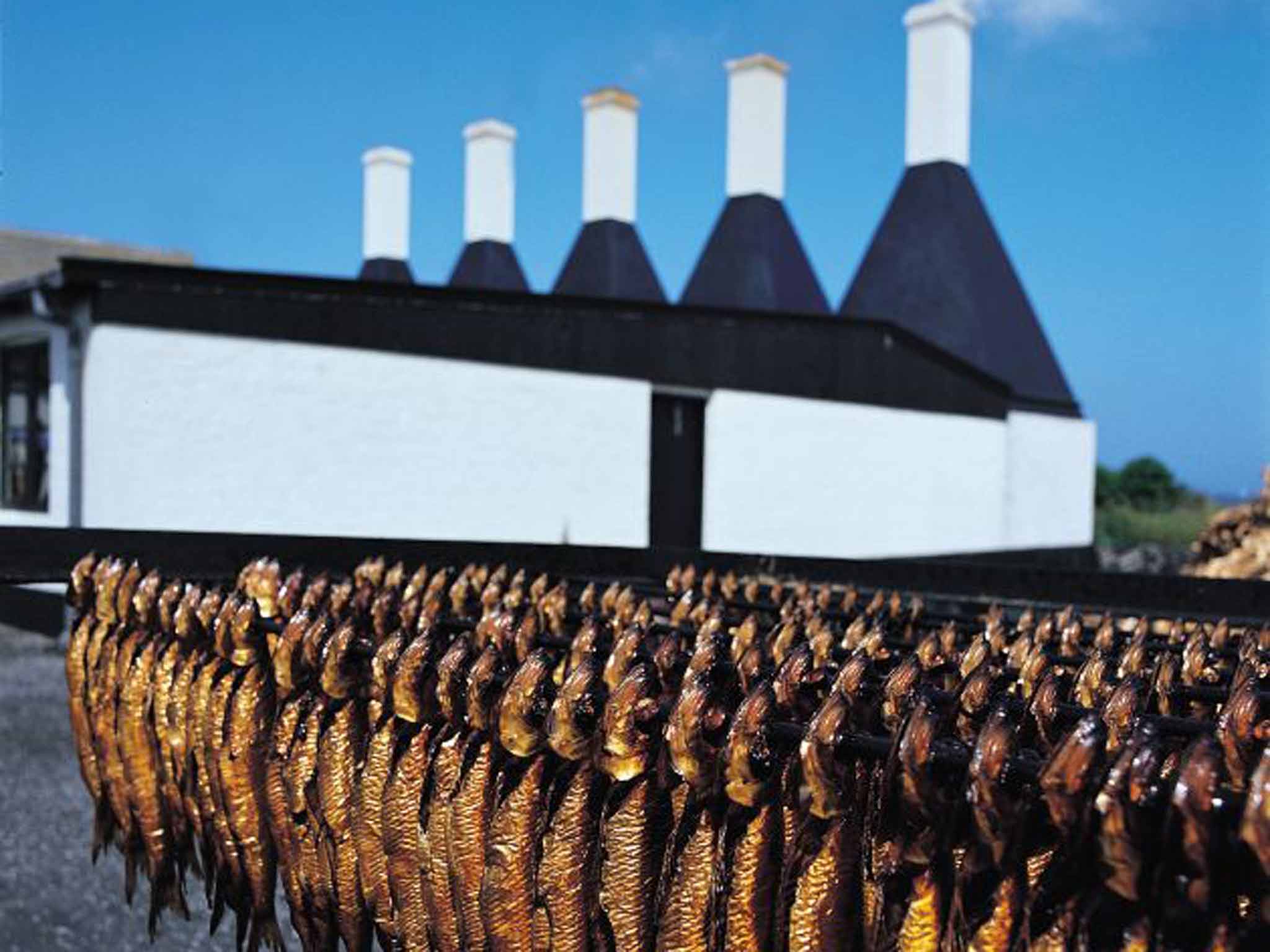How Bornholm was reinvented as Denmark's 'green island'
The population of the 'sunny island' was in decline until a wave of craftspeople and green idealists breathed new life into it, says Oliver Lowenstein

Your support helps us to tell the story
From reproductive rights to climate change to Big Tech, The Independent is on the ground when the story is developing. Whether it's investigating the financials of Elon Musk's pro-Trump PAC or producing our latest documentary, 'The A Word', which shines a light on the American women fighting for reproductive rights, we know how important it is to parse out the facts from the messaging.
At such a critical moment in US history, we need reporters on the ground. Your donation allows us to keep sending journalists to speak to both sides of the story.
The Independent is trusted by Americans across the entire political spectrum. And unlike many other quality news outlets, we choose not to lock Americans out of our reporting and analysis with paywalls. We believe quality journalism should be available to everyone, paid for by those who can afford it.
Your support makes all the difference.As the ferry approaches the harbour, turning turbine blades come into view, along the small town of Ronne's skyline. This is Denmark, though not quite as you know it. Or rather, not quite where you might expect it.
Sitting in the Western Baltic Sea, 115 miles east of Denmark's main island, Zeeland, and 40 miles south of Southern Sweden, Bornholm is semi-separate from the rest of the country. Ask any Dane what they know of the place and they will likely reply, "the sunny island"; its distance from Atlantic gales and rain brings some of the balmiest summer months to be found in Denmark, supplemented by the granite rock-bed warming up over summer, and providing extra heat in September. Its picture-postcard shoreline is a striking contrast to much of the rest of the low-lying country. Along the south-west coast there are particularly dramatic cliffs and promontories, which a British visitor might associate with Dorset or Devon, climaxing in the oak glades and atmospheric ruins of Northern Europe's largest castle, Hammerhus.
Holidaymakers in cars and camper vans, on bikes and on foot have long been drawn here, in search of R&R amid the island's slower-paced farming and fishing life. Yet Bornholm has been losing its population in recent decades; it slipped below 40,000 – down from 48,000 in the mid-Seventies – for the first time in 2014.

Arresting this slow-motion decline is at the heart of the island's internal conversation, and has precipitated recasting Bornholm as a zero-carbon island under the strapline "Bright Green Island", with "eco-tourism" a primary theme. The project reached a milestone this spring, when Green Solution House, the world's first c2c (cradle to cradle) hotel, opened. From carpets to tables and chairs, soap holders to candle holders, all sorts of new products highlight re-use, recycling and upcycling, encapsulating its sustainable cradle to cradle – rather than cradle to grave (or landfill) – philosophy. The building does the same, albeit with a leaning toward some high-tech materials and equipment including cutting-edge roofing from its sponsor Velux, and a locally developed algae water purifying system. The oversized glass tubes of the algae system vie with an impressive green wall, and when I first arrived, late in the evening, the unlit space glowed eerily like a futuristic film set.
It's too early to predict how the Bright Green Island strategy will work out, but other initiatives, many focused on tourism, are being introduced. There's a well-developed cycle network encircling and criss-crossing the island, and a Food Culture House also just opened, fusing international, slow organic food movement thinking with traditional island fare.
Despite the island's declining population, there has been a small counter-migration of sorts, a wave of thirty-somethings moving here for the quality and pace of life – and the creative spirit. During the 18th century, the clays found here led to the creation of several ceramics factories which provided Denmark with the great majority of its china and porcelain. Those factories are all but gone now, but a new generation of craftspeople is setting up shop and settling down to make the island their home. They are part of a thriving arts and crafts scene, which within 20 years has made the island a ceramics centre with a worldwide reputation.

While being shown round by a young ceramicist, Louise Kragh Hansen, I fall into conversation with woodworker Hans Henning, a fit looking man in his mid-sixties. Each artisan, I soon realise, had been drawn to Bornholm for the slow, easy, if relatively frugal lifestyle that the island offers.
When the bottom fell out of the fishing industry in the Nineties, Bornholm invested heavily in tourism. The cliff-hewn western coastline, with its stretches of lovely sandy beach, is dotted with hotels, campsites and other holiday accommodation, as well as the kind of small, photogenic, one-time fishing villages that make for alpha-level tourist honeypots.
As I make my way round by bus I'm able to experience the island in all its glory. On the south-west coast, in Hasle, I find one of Bornholm's herring smokeries, with its tall chimney, and Gronbechs Gard, the island's craft association's main showroom. After calling at hilly Sandvik, on the far northern tip, I head down the far shore side to Gudhjem, Svanake, and Nexo, the one-time epicentre of the fishing industry here.

With European Union support Nexo was chosen as the site for a School of Ceramics and Glassware – glassblowers have also thrived on the island – which opened in 1997. An international Biennale, which alternates its venue between the two respective crafts, was launched two years later, and today draws the biggest names in the two fields.
Bornholm's rich, slow culture attracts makers, crafts-people and tourists alike, and aspects of the Bright Green Island's high-tech thinking, imported from the big city, seem a little out of step with this way of life. There are obvious challenges too, though. "Ceramics is the worst thing you can do environmentally," ceramicist Anne Mette Hjortshoj says as she shows me her lovely self-built, wood-fired kiln. But a younger colleague, Maja Frendrup, argues that "potters and the crafts-people who move to Bornholm are people who have some of most environmental mindsets." Whatever your view, Bornholm certainly makes for an appealing escape from mainland Denmark, as long as you take your time, of course.
Getting there
Oliver Lowenstein travelled by ferry from Ystad, in Sweden, with Faergen (00 45 70 23 15 15; faergen.com).
Airlines including British Airways, Ryanair, easyJet, Norwegian and SAS fly from the UK to Copenhagen (a 75-minute train ride from Ystad).
Staying there
Green Solution House (00 45 5695 1913; greensolutionhouse.dk). Doubles from Dkr1,200 (£113) B&B.
More information
Join our commenting forum
Join thought-provoking conversations, follow other Independent readers and see their replies
Comments